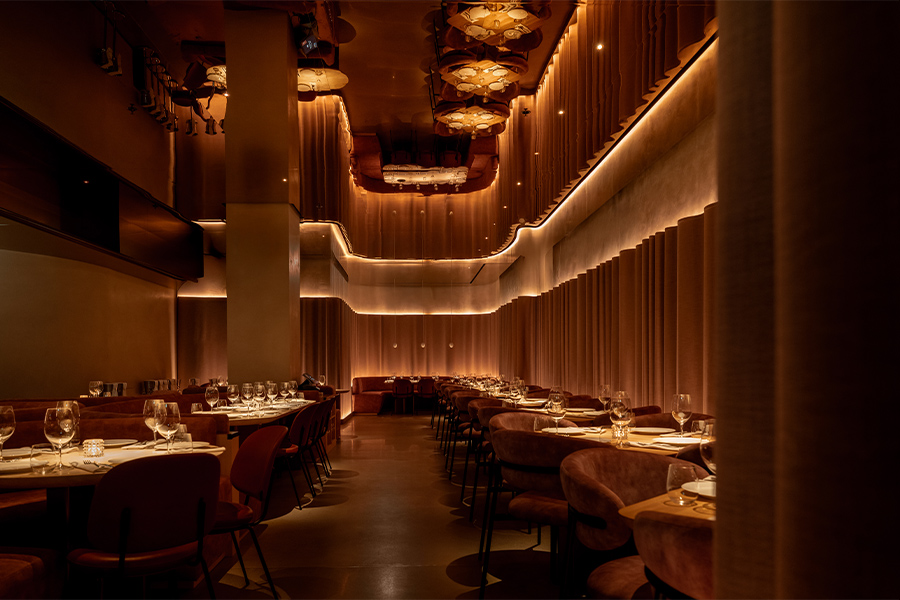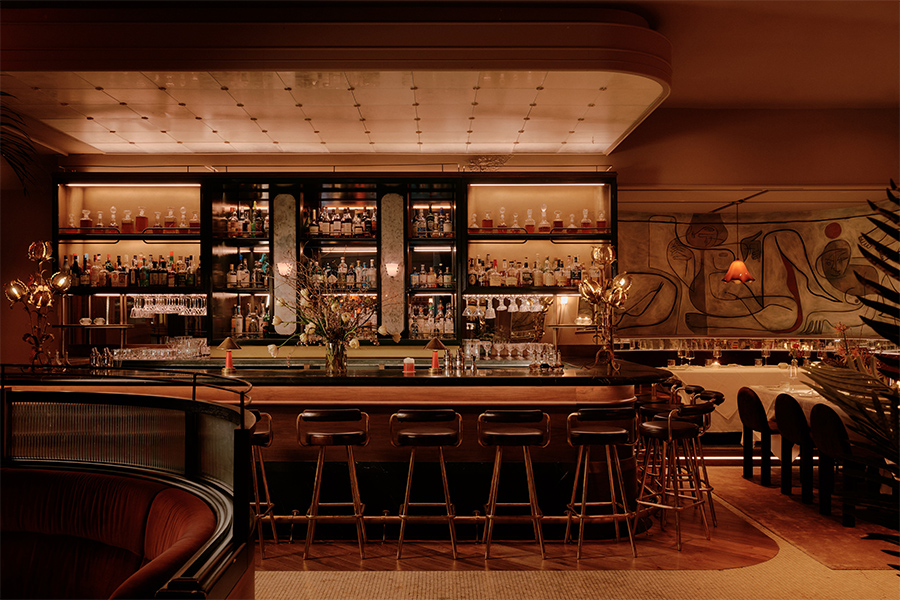When crafting Valencia’s Nozomi Sushi Bar in 2014, locally based design firm Masquespacio explored the streets of Kyoto to infuse the eatery with a sense of Japanese authenticity. The successful collaboration inspired the owners, José Miguel Herrera and Nuria Morell, to once again tap the firm—led by Ana Milena Hernández Palacios and Christophe Penasse—to design their latest Japanese concept, Hikari Yakitori Bar, in the city’s Ruzafa neighborhood.
Masquespacio drew inspiration from the “streets, the visual pollution, and the lighting” of Tokyo’s Kabukicho, Omoide Yokocho, and Hajimeya districts, Penasse says. The façade recalls the city’s tunnels with dim lighting and corrugated metal sheets, while also capturing the duality of noble and industrial materials that juxtapose classic and contemporary elements.
Flames from the open kitchen provide dramatic flashes, which allow diners to connect with the chef. And the restaurant’s interior further amplifies the urban ambiance with granite terrazzo floors, custom metal grid partitions, and concrete walls and ceilings. A monochromatic color scheme of gray with rust-toned finishes is warmed by touches of wood throughout.
“The biggest challenge was creating a connection point between the owners’ first venue Nozomi Sushi Bar and Hikari Yakitori Bar, without making a simple copy of it,” adds Hernández Palacios. “We used some similar materials like wood and concrete as a recognizable connection.”
Anchoring the dining room is a trolley cart modeled after the same ones spread across Japanese streets offering the skewered meat for which the restaurant is named. “We first designed the space without the trolley, but after presenting the design to our client, we felt something was missing in the middle that at the same time could help them during service,” Hernández Palacios says.
Tables and benches made of brick and wood are informed by the configuration of some of Tokyo’s smaller alleyway venues the duo visited. In addition to traditional lanterns, lighting crafted from methacrylate features metal holders and custom LED strips to recall the neon signs aglow in the streets of Tokyo.
“The central square full of lighting sculptures is the main point of the venue’s design,” Penasse says. “We wanted to maintain that street feeling in the interior” by mixing the materials found on Tokyo streets.



